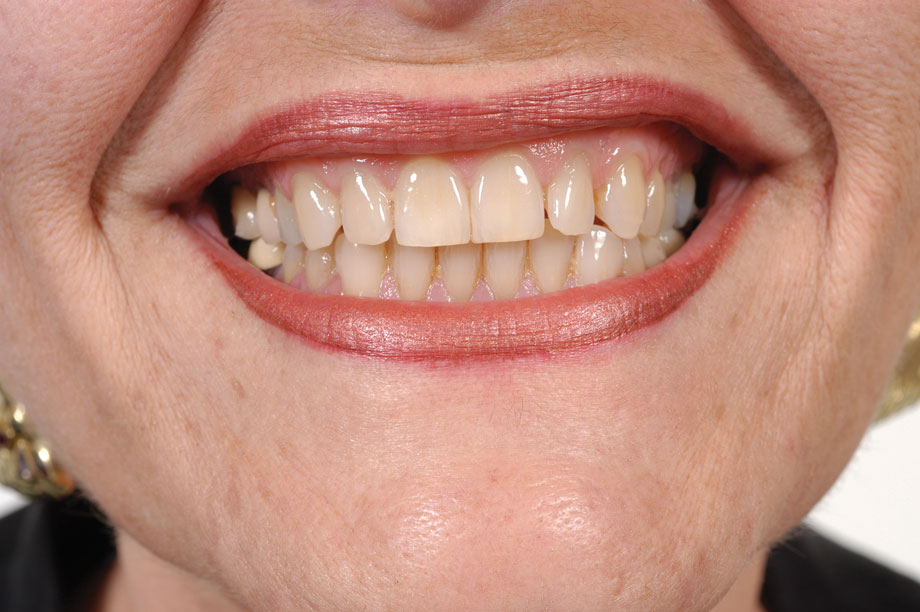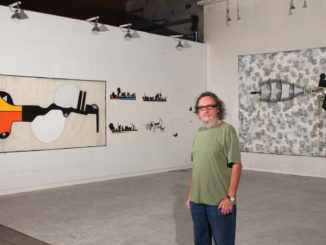
Thirty-four years is a long time to be in any business, let alone in one as seemingly fickle as the art business. As the art world ponders whether it’s hit a plateau or if its beginning to see the upswing of this recession, Bernice Steinbaum has weathered enough storms to know she’s left a legacy either way. Steinbaum is akin to the Meryl Streep of the Miami art world – a mainstay whose talents are considered by many to be the gold standard by which to measure up to. With rumors of her retiring from the work she loves so much, Miami Art Guide sat down with Mrs. Steinbaum to talk shop and figure out what she might be up to next.
Having moved to Miami from New York City ten years ago, Bernice Steinbaum is a Wynwood pioneer. She purchased 3550 North Miami Avenue in 1998, way before the neighborhood was considered an official arts district. Steinbaum moved into the building in 2000, taking two years to create the Bernice Steinbaum Gallery. “When I first came to Wynwood, I was the only commercial gallery in the district,” say Steinbaum. She credits her early success in Miami to her loyal group of New York clientele. “My New York clients stuck with me, for which I was very grateful”, she adds. The Wynwood of today, however, is a different place than the Wynwood Steinbaum moved into in 1998. With the mammoth Midtown Miami retail and condo complex engulfing a major part of the district, and condo-style lofts, galleries and restaurants popping up every few months, one wonders whether Wynwood will keep its urban-ness, or whether it will become another Lincoln Road. Steinbaum, though, can weather the changes and welcomes the growth of the neighborhood either way. “I think it’s wonderful”, she says of the new Wynwood. “There are about 76 galleries now – some that will last, some that will go out of business”.
As for the presence that corporate chains may or may not have on her business, Steinbaum isn’t sweating it. “The people who come to see my gallery have nothing to do with Midtown. It hasn’t improved my business but I’m delighted that its there in that it serves the community”, Steinbaum says. The neighboring Design District is another area that has seen significant changes over the past few years. From a variety of luxury design showrooms to galleries, restaurants, and firms, the Design District is now home to Locust Projects – Miami’s landmark alternative art space. Steinbaum believes in the future of the Design District, but also feels that there should be a separation between commodities and art. “The Design District housing Locust Projects is wonderful. I think Craig Robbins is a visionary and putting a non-profit in that area is wonderful”, Steinbaum says. “I do believe it’s important to have a separation of the Design District and Wynwood”, she adds. “There is a crossover sometimes, but we would hope that the life of our artists’ work goes beyond the surface. A gallery should not just be a place for merchandising. I feel that many galleries are in the business of selling objects. For me, the work needs to be treated with dignity and respect. Its not just merchandise,” she adds.
Respect is a two-way street, and it’s clear from her current exhibit that the artists Steinbaum represents feel the same way towards her. On the reception desk in the gallery, sits a lovely flower arrangement, sent to Steinbaum from Courtney Johnson, whose exhibit, Glass Cities, is on view at press time. Glass Cities is a series of paneled works depicting some of the world’s most iconic cities through the use of an historic photographic process called cliché-verre, whereby the artist paints on glass and uses the glass as a photographic negative to create her image. Johnson’s work is striking in its contrasts – fuchsia, blue, yellow, and red saturate each black background to make cities like Tokyo, Los Angles, New York City, and Miami twinkle with light and life that would otherwise perhaps only be caught by traditional photographs. These pieces are a mix of both. Steinbaum’s passion for art is clear as she explains Johnson’s process and talks about the work. She tears up when she sees the flower arrangement, and its obvious that art is as much a passion for this art dealer as it is for her artists.
The exhibit on view during Art Basel week will be Maria Magdalena Campos-Pons’ Hope: Yes we Can. Campos-Pons – an internationally recognized artist – has a career that spans over two decades. Her work explores the issues of race, culture, and identity through large-scale Polaroid photography, video, performance, and installation. In A Prayer for Obama, Campos-Pons, a Cuban native whose roots can be traced back to Nigeria, interprets the significance of the possibility of the first African-American President of the United States for an Afro-Cuban woman through a video performance shot on the morning of Election Day, November 4th, 2008. Hope: Yes We Can also includes large-scale Polaroids produced over the past year, including My Mother Told Me I Am Chinese: Painting Lesson, in which Campos-Pons explores her Chinese ancestry. Campos-Pons’ work is perhaps the perfect example of the kind of artistic voice Steinbaum chooses to represent. Steinbaum’s vision for her gallery in Miami was to continue the efforts she began in New York City, which was to represent a growing number of artists whose voices were not heard in the mainstream art world. “I started my gallery wanting to represent 50% women, and 50% artists of color. I felt that these artists were not represented because they were not written about, they did not participate in any big museum shows – they had no track record”, Steinbaum explains. Steinbaum currently represents 28 artists, all from diverse backgrounds who work in a variety of media. “A lot of people think I only represent women, and that’s not true. I knew that I would never have a gallery that only showed all women because the time of separate but equal was over”, Steinbaum adds. As to why she is drawn to the work of female artists, Steinbaum explains, “women are risk takers, perhaps even more so than men because no one ever looks at their work so they are free to do what they please”. In this case, that could be said about the dealer as well as her artists – for the risks she herself has taken have undoubtedly paid off.
As with almost any business these days, the question of the economy’s effect is one that is inevitably brought up. For Steinbaum, there are obvious signs that the recession has had its effect on her business, albeit in a more culturally significant way rather than economically. “Foot traffic seems to be disappearing”, Steinbaum says. “When people are worried about the basics – putting food on the table, paying the bills – they aren’t visiting galleries, although galleries are public institutions – and hopefully serve an educational purpose for the public”, she adds. Steinbaum demands professionalism and above all, communication of her staff. “ I demand a professional attitude of my staff towards whomever comes in to the gallery – whether it s a kid, a person who is dressed up, or dressed down – everyone has to be spoken to. Communicating with people is part of our everyday lives”, Steinbaum says. In terms of sales, Steinbaum sells fifty percent of the work she represents to museum acquisition funds, and another thirty percent to corporate art clients. The other portion of her clients are private buyers – although they are a significantly lower percentage of her clientele, which is surprising for someone who has been at the art game for more than three decades. When questioned about retirement, Steinbaum pauses and says, “I don’t know that one retires”. “ Especially not you!” pipes in Carrie, Steinbaum’s daughter who is at the gallery the day of this interview. “For an art dealer, art is as much a passion as it is for the artist”, says Steinbaum. “Its time to think about these things.”, she adds. And with that, the leading lady of Miami’s art scene says her goodbyes.



Be the first to comment